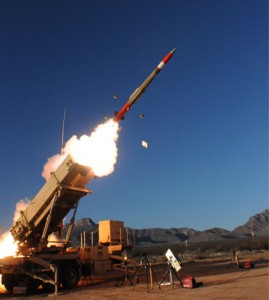Discovering Engineering: From Interior Design to Building Missiles
This week First Book is sharing stories about science and engineering from some of our friends at Lockheed Martin. Today’s guest blogger is Amanda Tippey, a mechanical engineer with Lockheed Martin in Dallas.

I didn’t grow up tinkering with cars or fixing things around the house with my dad. I was always creative and methodical, but my tiny hometown didn’t boast many engineers, and I honestly wasn’t sure what they actually did when I headed to college for an Interior Design degree. And yet, here I am, a mechanical engineer helping design the PAC-3 MSE Missile at MFC. In the end, the drive to design – to visualize and create incredible things – made engineering the perfect fit for me.
Although my history isn’t particularly dramatic or exciting, it does illustrate how varied a group engineers truly are. I’ll concede that some of the stereotypes are true (I do have a weakness for those Dilbert comics), but the paths that led us to the field are as unique as our talents within it.
Granted, not many begin with Interior Design. For me, it was the creative aspect of engineering that appealed the most; for others, it’s the practical, the technological or, believe it or not, the analytical side of the work that most fascinates. It’s this amazing variety within the field that draws so many of us to engineering – and makes it so difficult to narrowly define. “Engineering” is everywhere, encompasses a multitude of things, and means something different to everyone … and they’re probably all correct.
Here at Lockheed Martin, I am constantly amazed by the variety of expertise of my co-workers. It’s humbling from the perspective of a relatively new engineer to realize there is so much to learn, but it helps to recognize that it’s our different backgrounds and abilities that allow us to solve problems
together that we never could on our own.
In the end, that’s what engineers do: solve problems. It sounds simple until you consider that the types of problems we can examine and the various approaches to solving them are endless.
 Last February, it all came home to me as I watched the missile that I had helped refine over the last few months, studied in models and actually touched successfully intercept a target over the New Mexico desert. I thought of all the different people who had to work together to achieve something so seemingly impossible, of which engineers are only a fraction, and I was proud to be a part of it. For me, there is definitely no shame in having “the knack”.
Last February, it all came home to me as I watched the missile that I had helped refine over the last few months, studied in models and actually touched successfully intercept a target over the New Mexico desert. I thought of all the different people who had to work together to achieve something so seemingly impossible, of which engineers are only a fraction, and I was proud to be a part of it. For me, there is definitely no shame in having “the knack”.
If you’re a student, what do you think of Amanda’s job? What do you like (or dislike) about studying science and math in school?
